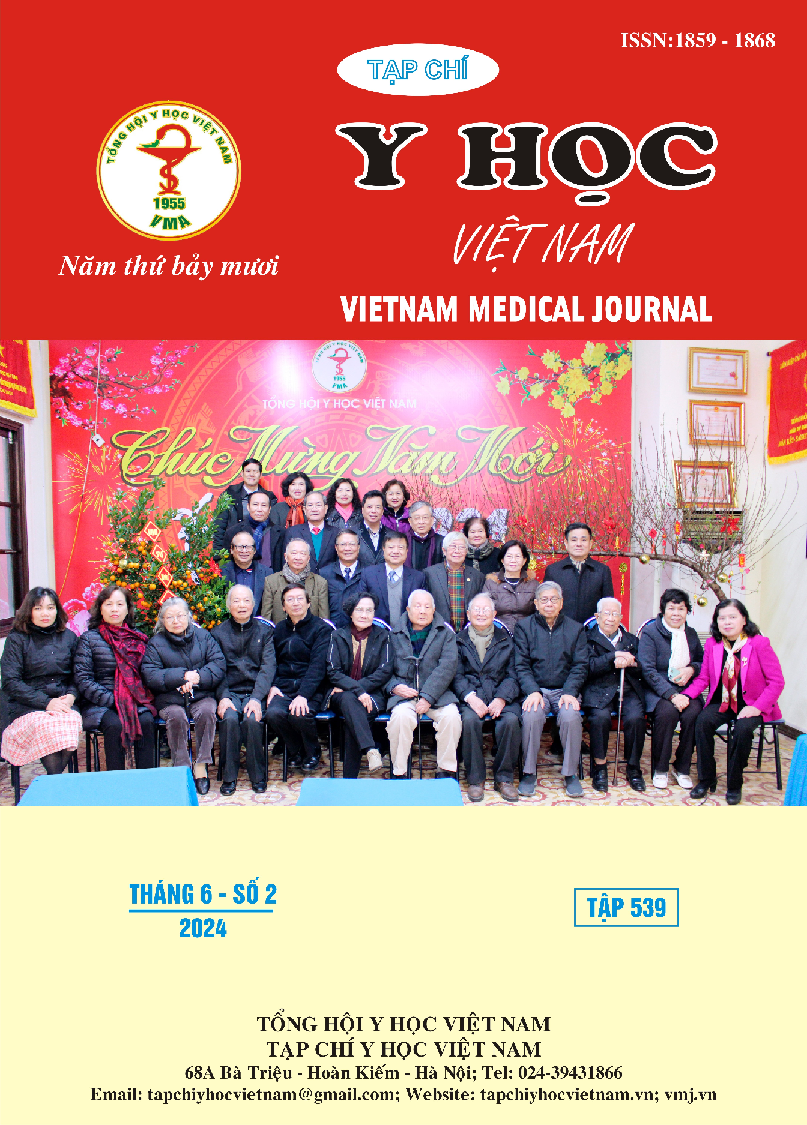NGHIÊN CỨU TÁC DỤNG CHỐNG XƠ GAN CỦA VIÊN NANG CỨNG TD.0072 TRÊN ĐỘNG VẬT THỰC NGHIỆM
Nội dung chính của bài viết
Tóm tắt
Mục tiêu nghiên cứu: Nghiên cứu tác dụng chống xơ gan của viên nang cứng TD.0072 trên chuột nhắt trắng. Đối tượng và phương pháp nghiên cứu: Chuột nhắt trắng chủng Swiss, cả hai giống, khoẻ mạnh, trọng lượng 25-30 g do Viện Vệ sinh Dịch tễ Trung ương cung cấp. Nghiên cứu tác dụng chống xơ gan của TD0072 trên mô hình gây xơ gan bằng cách tiêm màng bụng chuột nhắt dung dịch CCl4. Kết quả: Không có sự khác biệt khi so sánh trọng lượng gan chuột giữa lô mô hình và các lô uống thuốc (TD0072, silymarin). Hoạt độ AST và ALT không có sự khác biệt giữa các lô uống TD0072 và lô mô hình. Hoạt độ GGT ở cả 2 mức liều nghiên cứu đều giảm đáng kể so với lô mô hình (p<0,05 và p < 0,01). TD0072 ở cả 2 mức liều nghiên cứu đều không làm thay đổi có ý nghĩa thống kê nồng độ albumin và cholesterol trong huyết thanh so với lô mô hình (p>0,05). Không có sự khác biệt khi so sánh với lô mô hình (p > 0,05) về nồng độ MDA và lượng hydroxyproline. Kết luận: TD0072 ở 2 mức liều 1,728 g/kg/ngày (tương đương liều dự kiến lâm sàng) và 5,184 g/kg/ngày (liều gấp 3) trên mô hình thực nghiệm gây xơ gan bằng CCl4 cho thấy sự cải thiện rõ rệt các chỉ số hoạt độ GGT so với lô mô hình, sự khác biệt có ý nghĩa thống kê. Chưa quan sát thấy sự khác biệt khi so sánh trọng lượng gan; các chỉ số hoạt độ AST, ALT; nồng độ albumin và cholesterol toàn phần huyết thanh; nồng độ MDA và hydroxyproline của các lô chuột uống TD0072 và lô mô hình
Chi tiết bài viết
Từ khóa
xơ gan, TD0072
Tài liệu tham khảo
2. Đỗ Trung Đàm (2006), Phương pháp ngoại suy liều có hiệu quả tương đương giữa người và động vật thí nghiệm. Phương pháp nghiên cứu tác dụng dược lý của thuốc từ dược thảo
3. Bộ môn Hoá sinh, Trường Đại học Y Hà Nội, (2001), Hoá sinh, Nhà xuất bản Y học, tr. 646-685
4. Bích, Đ. H., Tập, N., Hiển, P. V., Toàn, T., Lộ, V. N., Mân, P. K., ...& Chung, Đ. Q. (2006). Cây thuốc và động vật làm thuốc ở Việt Nam, tập I, II. Nhà xuất bản Khoa học và Kỹ thuật.
5. Tsochatzis E.A., Bosh J., Burroughs A.K. (2014). Liver cirrhosis, Lancet, 383(9930), pp 1749-1761
6. Scholten D, Trebicka J, Liedtke C, Weiskirchen R. The carbon tetrachloride model in mice. Lab Anim. 2015;49(1 Suppl):4-11.
7. Lepara Z, Lepara O, Fajkić A, et al. Serum malondialdehyde (MDA) level as a potential biomarker of cancer progression for patients with bladder cancer. Rom J Intern Med. 2020; 58(3): 146-152
8. Gabr SA, Alghadir AH, Sherif YE, Ghfar AA. Hydroxyproline as a biomarker in liver disease. In: Patel V, Preedy V, eds. Biomarkers in liver disease. Biomarkers in disease: Methods, discoveries and applications. Springer, Dordrecht; 2017:471-491. https://doi. org/10.1007/978-94-007-7675-3_26


